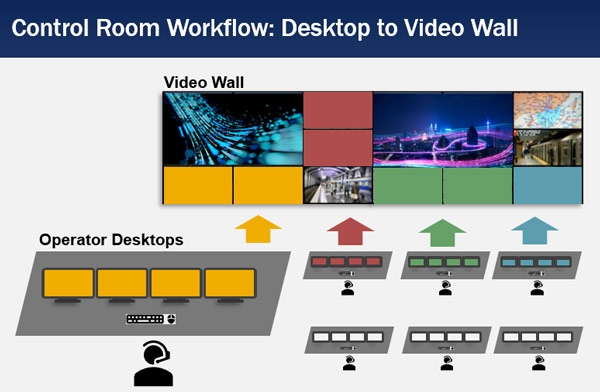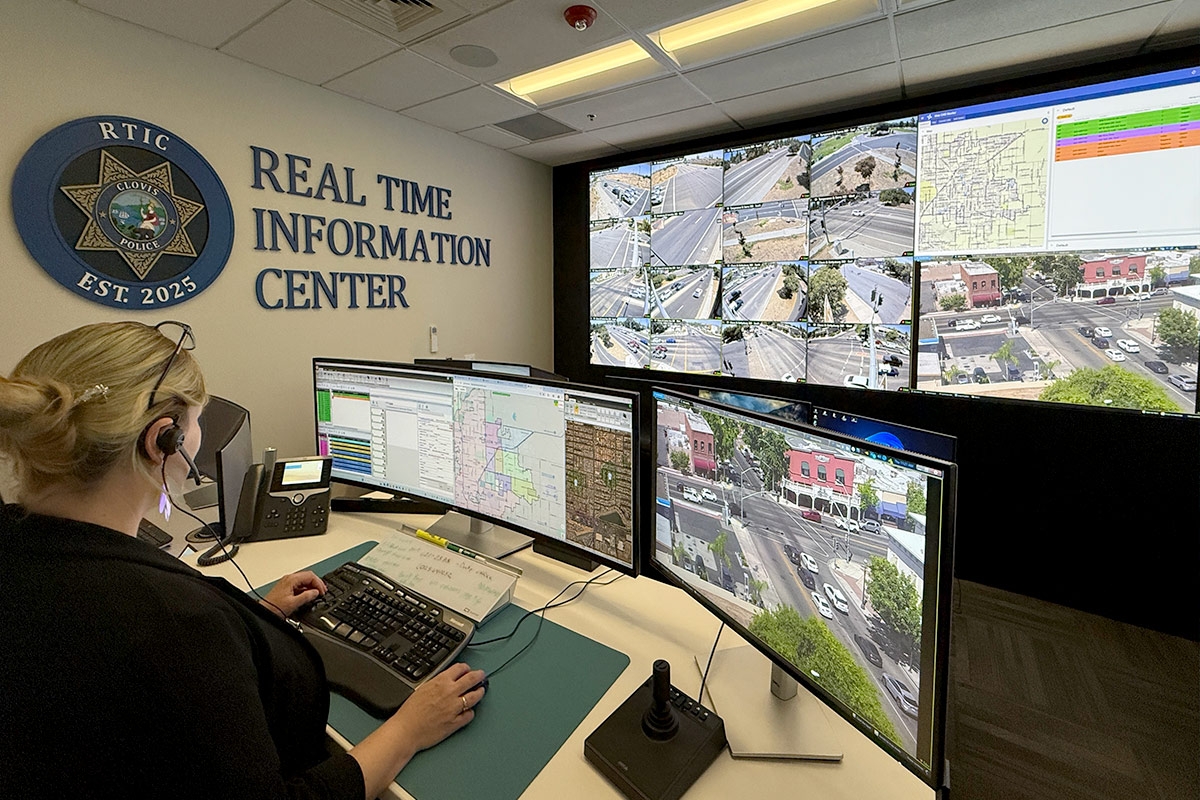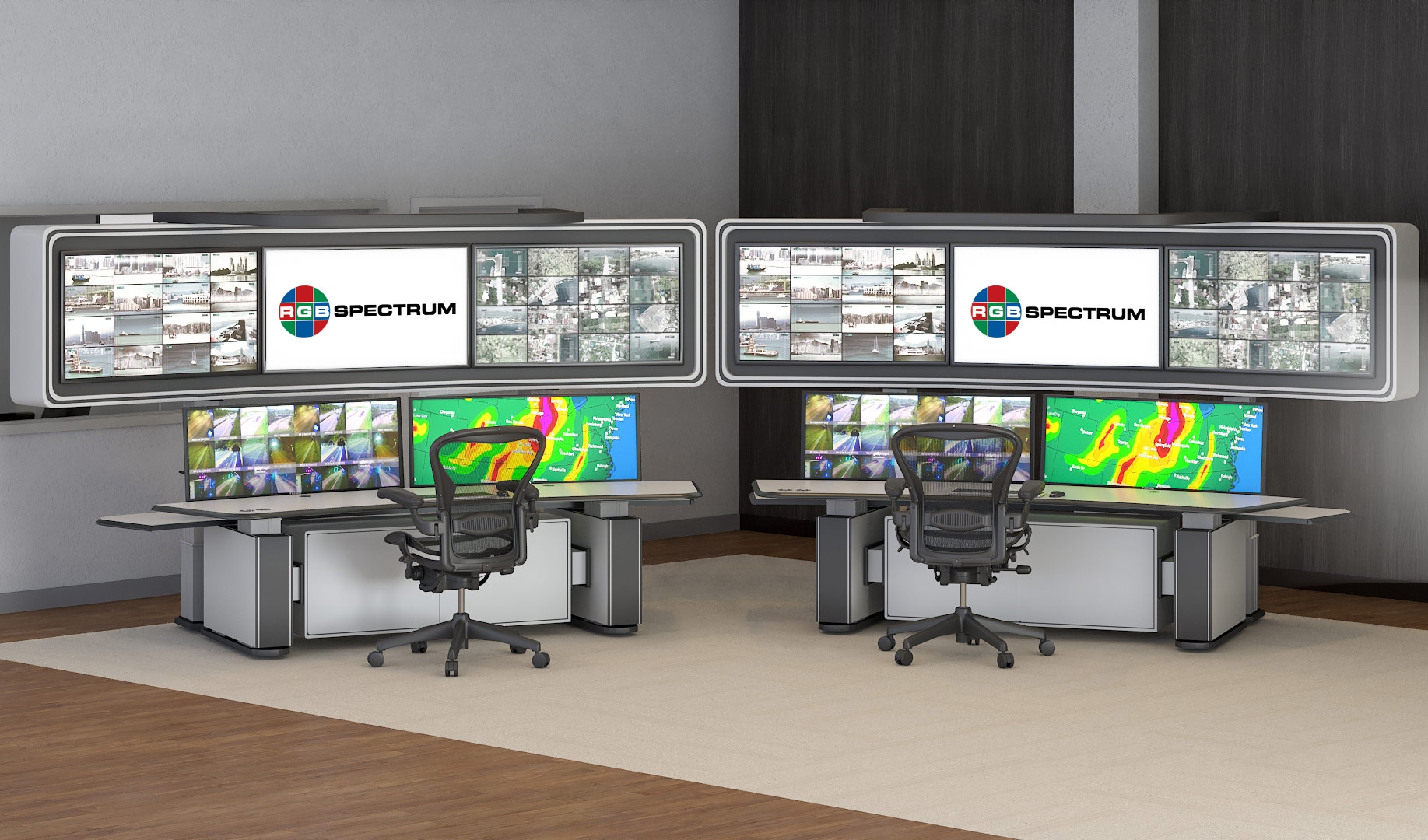Integrating Video Wall Display, Operator Stations and KVM Control for a Complete Control Room AV Solution
The goal of control room audio-visual systems is to provide improved situational awareness, better decision-making and faster response. Real-time analysis and control is critical for decision making.
Here we discuss technologies that provide integrated visualization of many types of baseband, Video-over-IP, and web-based video and data sources with centralized control.
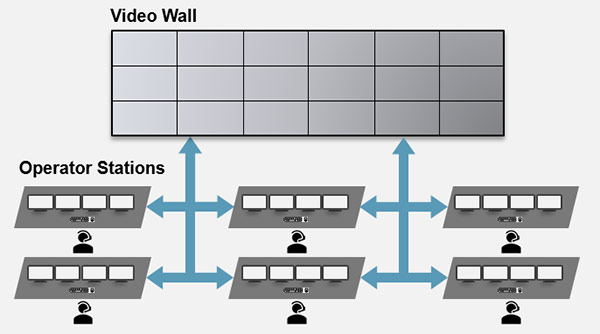
The ability to monitor, coordinate and respond collaboratively is key to control room design.
There are at least two critical elements in the control room AV system – the video wall and the operator stations. The video wall is the focal point for visualization, connecting decision makers to critical Information curated by operators at their various control stations.
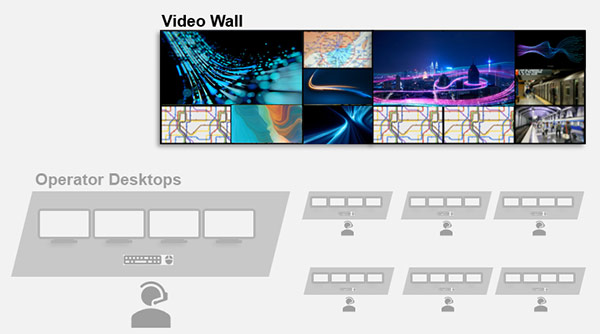
The video wall is the focal point of the control room, connecting decision makers to critical information curated by the operator stations.
Control room video wall displays are driven by a video processor, enabling one or more video walls to present visual data, preferably with scaling of individual images from very small to very large sizes. One of the most important requirements of a video wall processor is the ability to support an extensive variety of disparate imagery. The range of possible sources includes feeds from the local operator stations, such as maps, video teleconferencing, sensor data, etc. Additional sources include inputs from the center’s private network, consisting of surveillance video, monitoring data, access control, and more. Finally, external sources may need to be acquired and displayed, such as news and broadcast feeds, external Video-over-IP visuals, remote communications, and weather.
RGB Spectrum’s video wall processors provide seamless integration of these various video and data source types to create a customizable, information-rich visual canvas to aid in decision making.
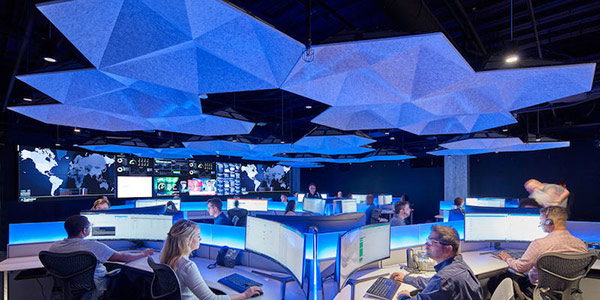
RGB Spectrum’s video wall processors provide seamless integration of disparate video and data source types to create a customizable, information-rich visual canvas.
Control room video wall processors need to meet many mission critical requirements. Most importantly, they need to deliver live, real-time performance, with no dropped frames for optimal viewing of critical visuals. They also need to provide high-fidelity inputs up to 4K resolution for the highest detail. The flexibility to display visuals in any size, anywhere on the video wall, with pan and zoom for viewing areas of particular interest, is also advantageous. RGB Spectrum’s line of video wall processors meet all of these requirements.
Another desirable feature is the ability to distribute content outside of the room. RGB Spectrum’s video wall processors offer the ability to send content seen on the video wall, either in its entirety or portions thereof, for remote viewing - operator stations, adjacent rooms, and wherever there is a network connection. This allows collaboration and coordination between related organizations. For example, fire and police department control centers can share information, enabling them to work closely together in, say, public safety.
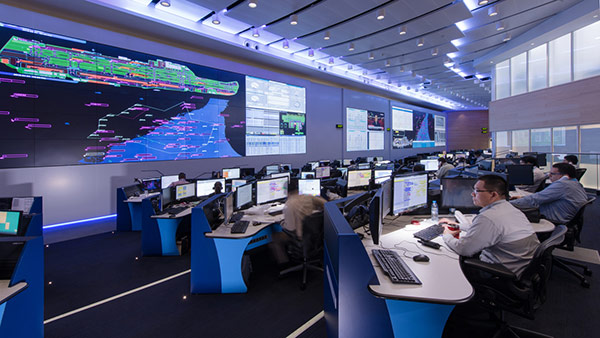
Operator stations are one of the most important AV components of the control room, monitoring real-time video, audio and applications.
In the command room workflow, operators share responsibility for placing content on the video wall, providing the most relevant information to other operators and decision makers. One or more operators may also be tasked with managing the content on the video wall, choosing and scaling the content as appropriate for the situation at hand, manually or with presets.
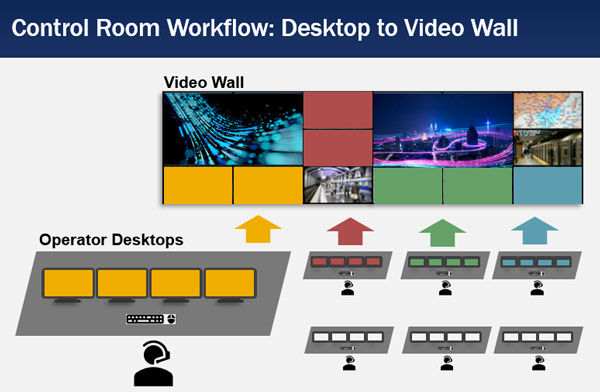
In the control room workflow, operators share, place and manage content on the video wall.
The next step is to enable operators to operate remote computers and other systems with KVM (video-keyboard-mouse) control. RGB Spectrum’s new XtendPoint™ KVM-over-IP systems add this capability to the operator stations to allow them to securely control and share remote systems across the room or even worldwide.
XtendPoint KVM-over-IP supports one-to-one, one-to-many, many-to-one, or many-to-many configurations.
Ergonomic efficiency is critical. It was once standard practice to have multiple monitors on the operator station to execute separate functions. But having multiple keyboards and mice creates confusion and reduces work efficiency. XtendPoint KVM replaces and consolidates the multiple keyboards and mice with a single keyboard and mouse, providing unified control at each station.
In addition, XtendPoint's KVM offers the versatility to view and control systems on separate displays or in windows on a single display. KlickSimple™ cursor navigation means the operator can simply move the mouse to the screen of the system they wish to control.
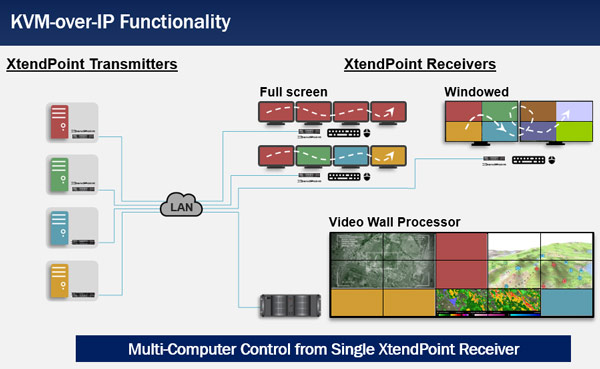
RGB Spectrum’s XtendPoint KVM-over-IP systems provide operators centralized control for interacting with local or remote systems.
XtendPoint KVM delivers low latency responsiveness with exceptional 4Kp60 4:4:4 visual performance. It encodes high quality 4Kp60 sources into low-bandwidth streams that can be distributed to multiple decoders simultaneously, both at the operation stations and the video wall.
Multichannel XtendPoint endpoints are available in configurations that support up to either two or four signals simultaneously, with benefits to system architecture and cost.
XtendPoint also delivers interoperability with RGB Spectrum’s Galileo and Zio® W4000 video wall processors. Operators can sift through mountains of data, inspect multiple sources, and quickly share any source viewed on their local displays directly with the video wall. The video wall processor decodes and displays the streams without additional hardware.
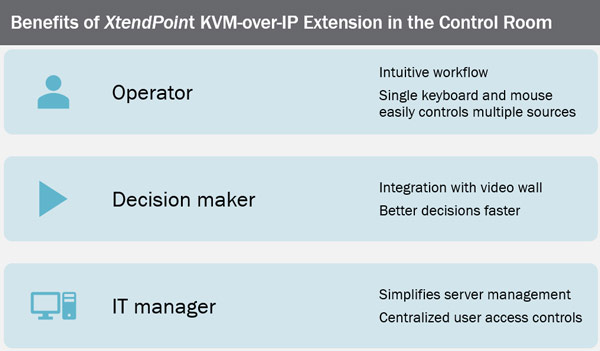
XtendPoint KVM-over-IP systems offer benefits to the operators, decision makers and IT managers
In summary, RGB Spectrum’s video wall processors and KVM-over-IP systems provide a comprehensive audio-visual solution to meet the most demanding control room requirements, integrating video walls, operator stations and control of remote systems.
RGB Spectrum is a leading designer and manufacturer of mission-critical, real-time audio-visual solutions for a civilian, government, and military client base. The company offers integrated hardware, software, and control systems to satisfy the most demanding requirements. Since 1987, RGB Spectrum has been dedicated to helping its customers achieve Better Decisions. Faster.™
